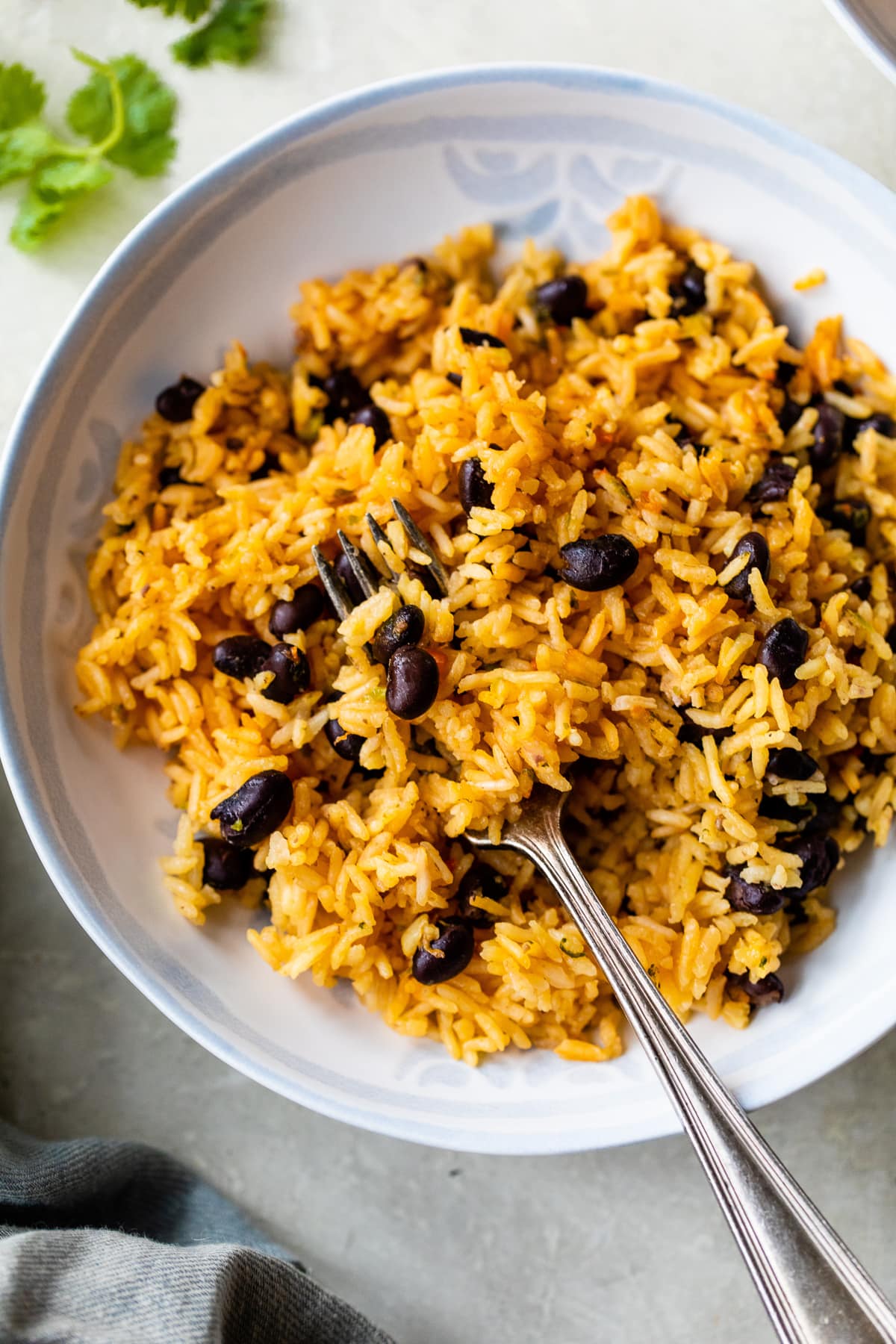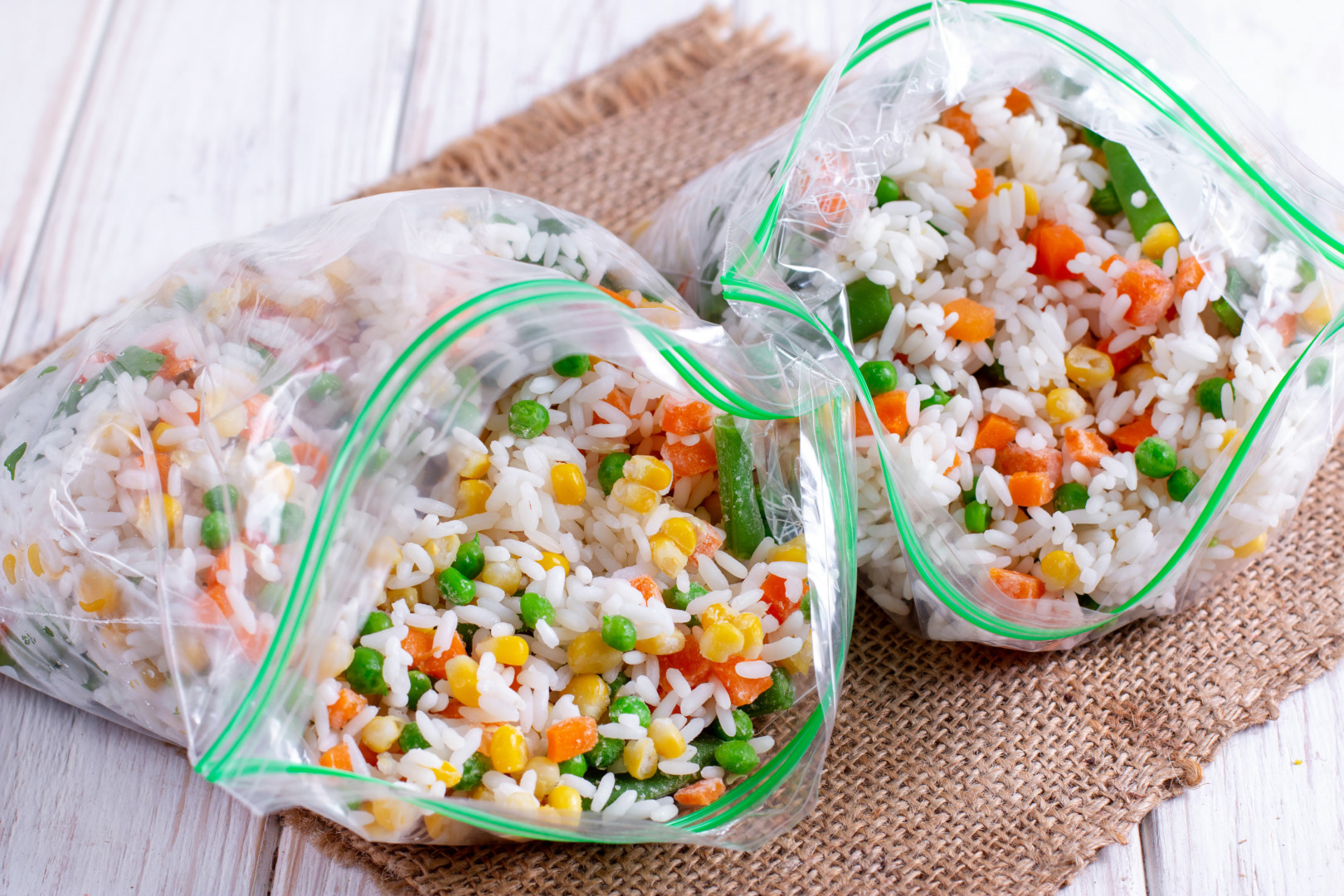Have you ever cooked a big batch of rice and beans and found yourself wondering what to do with all the leftovers? You’re not alone.
Many people face this dilemma, and the good news is that freezing might just be the answer you’re looking for. But before you toss those grains and legumes into the freezer, there are a few things you should know to keep them delicious and safe to eat.
Imagine never having to worry about wasting food or spending extra time cooking during your busy weeks. We’ll explore the ins and outs of freezing rice and beans, ensuring you make the most out of your meals while keeping both taste and texture intact. Stay with us and unlock the secrets to prolonging the life of your favorite dishes without compromising on quality.
Table of Contents
Freezing Basics
Rice and beans are a good meal choice. They are easy to cook and very tasty. Freezing them helps keep them fresh for a long time. No more worries about them going bad. It’s a smart way to save time and money. You can enjoy them anytime.
Freezing rice and beans is a great idea. It helps in storing leftovers. You can eat them later. This saves food and money. It’s perfect for busy days when cooking is hard. Just heat and eat. Your meal is ready!
:max_bytes(150000):strip_icc()/Simply-Recipes-Easy-Freezer-Burritos-METHOD-SEO-80fe062581ca4189ad0b6bed2e348fcf.jpg)
Credit: www.simplyrecipes.com
Preparation Steps
Freezing rice and beans is simple. First, cook them until fully done. Cool completely before storing in airtight containers. Divide into portions for easy thawing.
Cooking Rice And Beans
Start with fresh ingredients for the best taste. Cook rice and beansseparately. Use a large pot for cooking rice. Add water and rice, then bring to a boil. Cover and simmer until the rice is fluffy. For beans, rinse and soak them first. Cook them in a pot with water until soft. Season with salt and spices. Make sure both rice and beans are fully cooked.
Cooling Properly
Let the cooked rice and beans cool down. Spread them out on a tray for faster cooling. This helps prevent spoilage. Make sure they are at room temperature. Do not store them while hot. Proper cooling keeps them fresh. Freeze them once they are cool. Use airtight containers for storage.
Packaging Techniques
Containers keep rice and beans fresh. Glass jars are strong and safe. Plastic bags are light and easy to store. Plastic containers are simple to stack. Choose airtight ones to prevent air. Air makes food go bad.
Vacuum sealing removes air from bags. This keeps food fresh longer. Machines help seal bags tight. They suck air out first. Manual sealers work too. They need human help. Squeeze air out by hand. Both ways work well.
Freezing Process
Rice and beans stay fresh in the freezer. Set the temperature to 0°F or lower. Cold temperatures keep food safe. Cold stops bacteria from growing. Ensure your freezer stays closed. Opening it often raises the temperature. Use a thermometer to check. This keeps your rice and beans safe to eat.
Freezer burn makes food taste bad. It happens when air touches the food. Use airtight containers or freezer bags. Remove as much air as you can. This helps keep the taste good. Label and date your food packages. Eat older food first to avoid waste.
Thawing Methods
Place the frozen rice and beans in the fridge. This way, they thaw slowly. It takes several hours or overnight. This method keeps the food fresh and safe. Food stays at a cool temperature. It helps prevent bacteria growth. Always use a clean plate or container. This avoids any mess inside the fridge.
Put the rice and beans in a microwave-safe dish. Use the defrost setting on your microwave. It works fast. Check every few minutes. Stir the food to spread the heat evenly. Be careful; the food might get hot. This method is quick but needs attention. The food can overcook if left too long.

Credit: www.skinnytaste.com
Reheating Tips
Use a pan for stovetop reheating. Add a splash of water or broth. This keeps the rice and beans from drying out. Stir the mixture gently to heat evenly. Keep the stove on low heat. This prevents burning. Cover the pan with a lid. The steam helps in reheating. Check the temperature before serving. Warm but not too hot.
Preheat the oven to 350 degrees Fahrenheit. Place rice and beans in an oven-safe dish. Sprinkle with a bit of water. Cover the dish with foil. This traps moisture inside. Heat for about 20 minutes. Stir halfway through for even warmth. Check if it’s hot enough. Serve when fully warmed.
Storage Duration
Freezing rice keeps it fresh for a long time. Frozen rice can stay good for about six months. The cold keeps germs away. White rice lasts longer than brown rice. Brown rice has more oil, which can spoil faster. Make sure rice is sealed tightly. Air can make rice dry and hard. Use freezer bags or containers.
Beans are easy to freeze. Frozen beans can last up to eight months. They stay tasty and safe to eat. Beans must be cooked before freezing. Raw beans do not freeze well. Cool beans completely before freezing. Use airtight bags to store them. This keeps them fresh and avoids ice crystals. Label bags with date to track storage time.

Credit: minuterice.com
Troubleshooting
Freezing rice and beans is possible and convenient for meal prep. Ensure they are cooled before freezing. Store in airtight containers to maintain freshness and prevent freezer burn.
Common Freezing Mistakes
Many people make mistakes when freezing rice and beans. Wrong containers can cause freezer burn. Too much air in the bag is a problem. It can make food taste bad. Not cooling food before freezing is a mistake. Hot food creates ice crystals. These crystals affect texture. Overfilling bags can cause spills in the freezer. Labeling bags is important. It helps you know what’s inside. Forgetting this step leads to confusion later.
Signs Of Spoilage
Spoiled rice and beans have clear signs. A bad smell is a big clue. Discoloration shows food is old. Mold means you must throw it away. Slimy texture is a sign of spoilage. Ice crystals inside bags suggest freezer burn. Check these signs before eating. Safety first is important.
Creative Uses
Rice and beans can be used in many meals. Freeze them to save time. Make a big batch and use it all week. They are great for lunch or dinner. Add them to burritos or tacos. They also go well in soups and stews. You can even mix them with vegetables. This keeps meals interesting and tasty.
Cooking in batches saves time and money. It helps reduce food waste too. By freezing rice and beans, you have ready-to-eat meals. Just heat and serve. Perfect for busy days. You also get to enjoy healthy meals. They are nutritious and filling. This way, you eat well without much effort.
Conclusion
Freezing rice and beans is a smart way to save time. It keeps food fresh and ready for quick meals. Just prepare, pack, and freeze. This method reduces waste and supports busy lifestyles. Ensure airtight containers for best results. Thawing is simple and quick when needed.
Enjoy tasty meals anytime with minimal effort. Use this method to simplify cooking routines. Perfect for families and singles alike. Experiment with different spices and flavors. It’s a convenient solution for meal planning. Embrace the ease of frozen meals. A helpful tip for kitchen efficiency.

I am Brianna, a self-published author with a passion for sharing my knowledge and expertise on various topics with people looking to find the perfect items for their needs. I love ensuring that the right informative content is available to people looking for the right information. I am an avid horseback rider and reader when I am not writing.
Follow me on Facebook, TikTok, or Personal Blog.